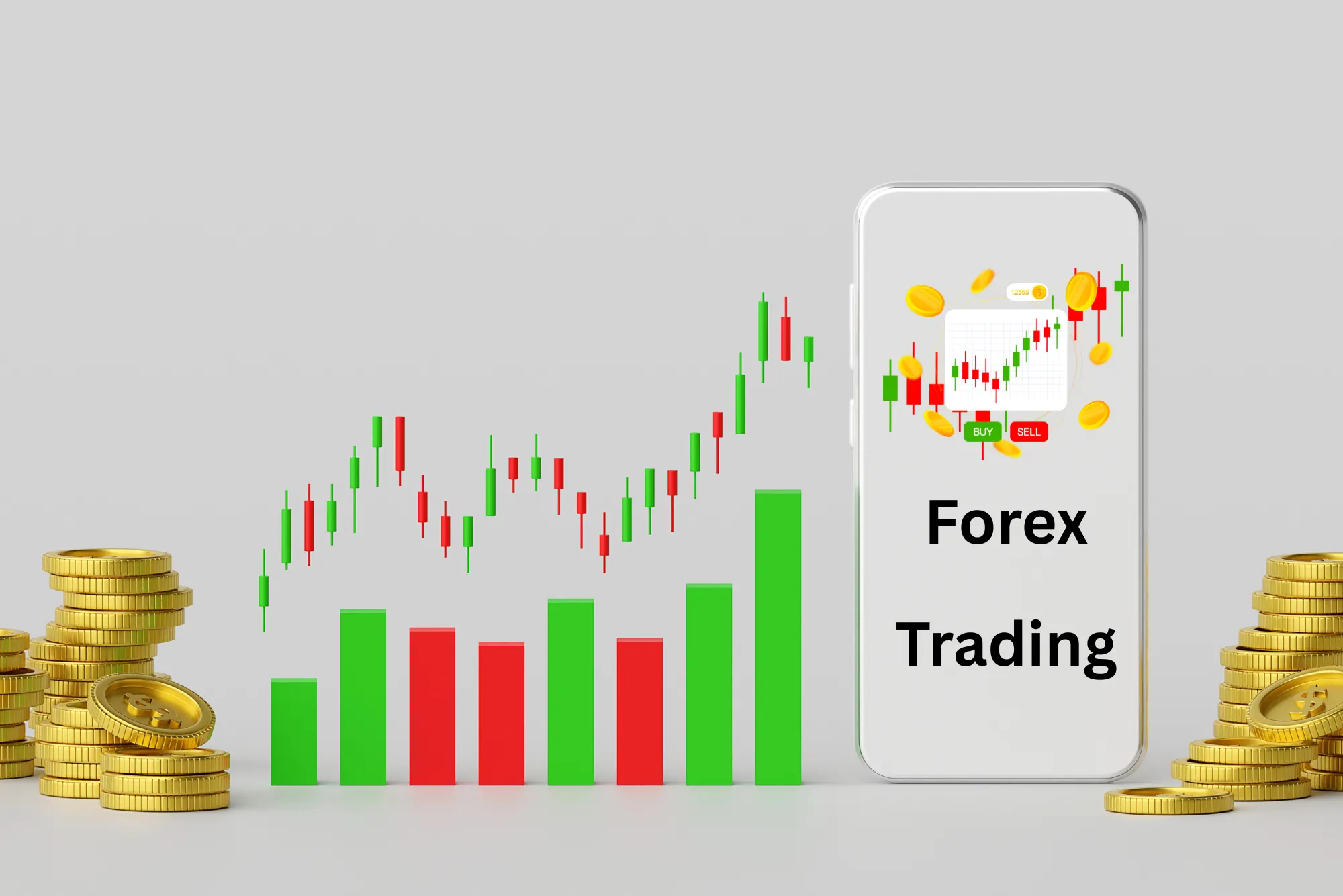

Dubai’s financial sector attracts global attention. Thousands of UAE residents explore forex annually, yet confusion surrounds basics. What exactly is forex? How does trading work? What makes it different from stocks?
Clarity on fundamentals separates informed decisions from costly mistakes.
Forex represents “foreign exchange” – the global marketplace where currencies trade against each other. This decentralized market operates 24 hours daily, processing over $7.5 trillion transactions.
Simple definition: Forex involves buying one currency while simultaneously selling another. The goal? Profiting from exchange rate fluctuations.
Real-world example: EUR/USD at 1.1000 means one Euro equals 1.10 Dollars. Rate rises to 1.1100? Euro strengthened. Falls to 1.0900? Euro weakened.
Unlike physical currency exchange at airports, forex trading doesn’t involve actual delivery. Electronic transactions settle the difference between entry and exit.
Central Banks: Control monetary policy, interest rates. Most powerful movers.
Commercial Banks: Facilitate international trade. Largest volume contributors.
Investment Funds: Hedge funds, pension funds trading for diversification.
Corporations: Companies conducting international business hedging exposure.
Retail Traders: Individual participants accessing markets through online brokers.
According to data from the Bank for International Settlements, retail traders comprise approximately 5.5% of total daily volume.
International trade requires currency exchange. Japanese company buying German machinery needs converting Yen to Euros. UAE importing from US requires Dirhams to Dollars. Constant global commerce creates continuous activity.
Beyond commercial needs, speculation drives substantial volume. Traders seeking profits add liquidity and volatility.
Forex exchange trading differs fundamentally from stock markets.
Decentralized Structure: No central exchange exists. Trading occurs electronically over-the-counter through global network.
24-Hour Operation: Markets open Sunday evening, close Friday evening. Continuous operation across timezones.
UAE’s GMT+4 timezone provides excellent access. Tokyo available early morning, London opens midday, New York accessible evening.
Currency Pairs: Trading always involves pairs, never individual currencies. EUR/USD, GBP/JPY, AED/USD.
Leverage Availability: Brokers offer ratios (1:50, 1:100, 1:500) enabling controlling large positions with smaller capital. Amplifies both gains and losses.
High Liquidity: Major pairs offer instant execution with minimal slippage. Massive volume ensures easy entry/exit.
Low Costs: Spreads typically 1-3 pips on major pairs. Lower than stock commissions.
Bidirectional Trading: Profit potential exists whether currencies rise or fall. Buying profits from appreciation. Selling profits from depreciation.
A 2024 study by Finance Magnates found 68% of new UAE-based traders cite 24-hour access and leverage as primary attractions.
Analysis: Technical (charts, patterns, indicators) or fundamental (economic data, news) identifies opportunities.
Position Opening: Order placed through broker. Market orders execute immediately. Pending orders execute automatically at specified price.
Position Management: Monitoring performance. Adjusting stop-loss or take-profit.
Position Closing: Exiting manually or automatically. Profit/loss calculated based on pip movement and size.
Market Orders: Execute immediately at current price. Guaranteed execution.
Limit Orders: Execute only at specified price or better. Guarantees price, not execution.
Stop Orders: Trigger market order when price reaches level.
Stop-Loss Orders: Automatically close at predetermined loss level. Essential risk tool.
Take-Profit Orders: Automatically close at predetermined profit. Locks gains without constant monitoring.
Understanding complete process from account opening through withdrawal provides clarity.
Research regulated brokers serving UAE. Verify regulation from reputable authorities (FCA, CySEC, ASIC). Check Arabic support, local payments, Shariah-compliant options.
Platforms like fbs-ar.com/ar specifically cater to Arabic-speaking traders with localized services.
Complete online application providing identification (Emirates ID or passport), address proof, financial information. Verification typically 24-48 hours.
Islamic accounts particularly relevant for Muslim traders following Shariah principles.
Deposit capital through bank transfer, credit card, or e-wallets. Minimum deposits $100-$500 depending on broker.
UAE banking facilitates smooth international transfers. SWIFT typically 1-2 business days.
Download trading platform (MetaTrader 4/5, cTrader). Explore interface, charting, order placement. Practice on demo before risking real capital.
Demo accounts provide risk-free environment. Minimum 2-3 months practice recommended.
Study currency pairs. Analyze technical patterns, economic calendars, geopolitical developments.
Place orders based on analysis. Set stop-loss protecting against losses. Set take-profit targeting gains. Calculate size ensuring risk doesn’t exceed 1-2%.
Track performance. Adjust stop to break-even after reasonable profit develops.
Document details – entry/exit prices, reasons, outcome, lessons. Regular review identifies improvements.
Request withdrawals through platform. Funds return via same method as deposit. Processing varies – cards 3-5 days, transfers 5-7 days, e-wallets 24-48 hours.
Pip Movement: One pip equals 0.0001 movement. Profit/loss calculated by pip movement × position size × pip value.
Position Size Impact: Standard lot generates $10 per pip. Mini lot generates $1 per pip. Micro lot generates $0.10 per pip.
Leverage Effect: 1:100 leverage allows controlling $100,000 position with $1,000 margin. 50-pip movement generates $500 profit (or loss).
Leverage amplifies returns but equally amplifies losses. Critical understanding.
Several factors make UAE environment unique.
Securities and Commodities Authority oversees UAE financial sector. However, retail forex primarily through international brokers. Trading through regulated offshore brokers remains legal.
UAE imposes zero personal income tax. Trading profits remain entirely tax-free. Substantial advantage compared to jurisdictions taxing gains at 15-40%.
Islamic finance principles matter for Muslim traders. Interest prohibition makes standard accounts problematic.
Islamic accounts eliminate swap fees, meeting Shariah requirements.
GMT+4 positioning provides excellent session access. London/New York overlap (5:00 PM – 9:00 PM UAE time) offers peak liquidity during comfortable evening.
Dubai and Abu Dhabi provide world-class internet, reliable electricity, sophisticated banking. Infrastructure stability supports professional operations.
Forex carries substantial risks requiring clear understanding.
Leverage Risk: High leverage destroys accounts rapidly. Many beginners lose entire deposits within weeks.
Market Volatility: Sudden news creates violent price swings. Stop-losses may execute at worse prices during extreme volatility.
Counterparty Risk: Broker solvency matters. Only trade with properly regulated entities.
Emotional Risk: Fear and greed override rational analysis. Emotional decisions typically lose money.
Professional traders target 2-5% monthly returns. Beginners should expect losses initially. Breaking even during first year considered success.
Social media showcasing extraordinary returns typically represents unsustainable risk or outright fraud.
Understanding forex what is, how what is forex exchange trading operates, and learning what is forex trading and how does it work creates essential foundation. UAE’s favorable tax environment, infrastructure, and timezone provide unique advantages.
However, success requires treating forex as serious skill demanding dedicated education, extensive practice, disciplined management, and realistic expectations.
Start with comprehensive education, demo practice minimum 2-3 months, conservative leverage, and small initial capital acceptable to lose during learning.

A Look at Dubai Mall’s Most Talked-About Dining Spots in 2025

A Look at Dubai Mall’s Most Talked-About Dining Spots in 2025

The Confluence of Culinary Excellence and Casino Trends in the UAE


The Benefits of Hiring a Professional Clown for Children’s Parties


Near-Expiry Pantry & Sweets in Dubai: Big Savings on Everyday Essentials

كيف يمكنني اللعب في كازينو اون لاين بأمان؟

Ford Raptor 2025 in the UAE: Pricing, Power, and Desert Ready Capability

Behind Every Online Food Order in Dubai Is a Strong IT Support

A Look at Dubai Mall’s Most Talked-About Dining Spots in 2025

A Look at Dubai Mall’s Most Talked-About Dining Spots in 2025

The Confluence of Culinary Excellence and Casino Trends in the UAE